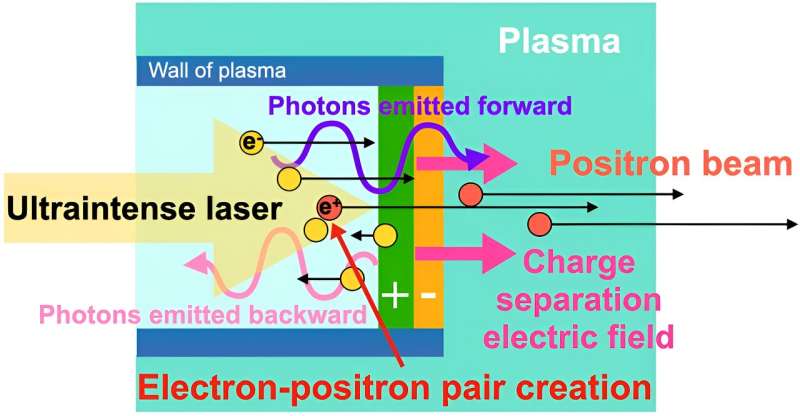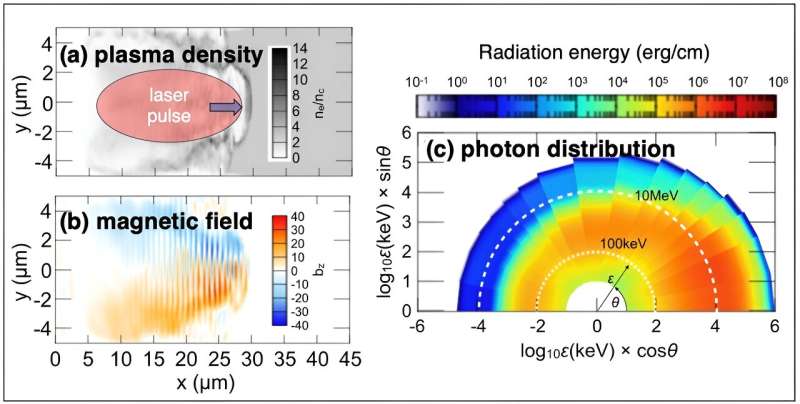How a Laser-Plasma Collider Can Instantly Transform Light Into Matter
Scientists from Osaka University and the University of California, San Diego have recently mimicked the creation of matter from photons. It negates what would otherwise be drastic reductions in intensity of modern lasers, and can be easily implemented if current technologies are adopted. It could help in some sort of experimental verification of old models such as Particle Physics Standard Model and possibly call for a new one.
Another spectacular prediction of quantum theory is the ability to create matter from light, and indeed, there are astronomical objects called pulsars. This kind of direct production of matter has not been done in a laboratory although it would take it a step further in challenging the theories of fundamental quantum physics and the contents of the universe.
In Physical Review Letters, one team with researchers from Osaka University mimic situations that facilitate photon-photon interactions, but with lasers alone. It is also a candidate for near term experiment realization due to the simplicity of the scheme and ease of implementation at presently available laser intensities.
Photon–photon collision is assumed to be one of the basic processes involved in the production of matter and is a direct result of E = mc2. In fact, researchers have indirectly produced matter from light: by the high speed impact of ions such as gold metal ions on one another. At such high speed, each ion is surrounded by photons and when passing each other very narrowly, matter and antimatter are created.

However, such precise synthesis of matter is difficult to emulate in modern laboratories by utilizing only laser light due to extremely powerful lasers needed for that purpose. Explaining how this might be done, could realize an experimental breakthrough of this sort in the lab; and this is what the researchers sought to attempt.
“The particle-in-cell simulations we used showed that dense plasma, while interfering with lasers, can self-organize and effectively create photon–photon collider,” says Dr. Sugimoto, the work’s lead author. “This collider,” according to one source, “has a population of gamma rays ten times more dense than electrons in plasma and whose energy is a millionfold greater than the photons in a laser. ”

These electron–positron pairs are created through photon–photon collisions in the collider, and the positrons are later accelerated by a plasma electric field induced by the laser. This leads to positron beam, which can be defined as the flow of positrons in a given direction.
“This is the first time researchers simulated accelerating positrons from the linear Breit–Wheeler process under relativistic settings,” said Prof Arefiev co-author of UCSD. “In our opinion, this work is experimentally viable and we anticipate its real-life application.
According to Dr. Vyacheslav Lukin who is a program director at the US National Science Foundation which funded the work, the following remark can be made, “This research gives an indication of how the great unknown of the universe might be recreated in a laboratory. The future of experiments at the modern and future high-power laser facilities is considerably more interesting. ”
Applications of this work to the fictional matter–energy conversion technology of Star Trek remain just that: Such aunt-nieces are usually depicted in fictions. However, this work appears to be capable of experimentally verifying some of the theories about the constituency of the universe or, at the very least, assist in the discovery of new physics.
Reference:K. Sugimoto et al, Positron Generation and Acceleration in a Self-Organized Photon Collider Enabled by an Ultraintense Laser Pulse, Physical Review Letters (2023). DOI: 10.1103/PhysRevLett.131.065102
Do not forget to share your opinion with us to provide you with the best posts !




0 Comments